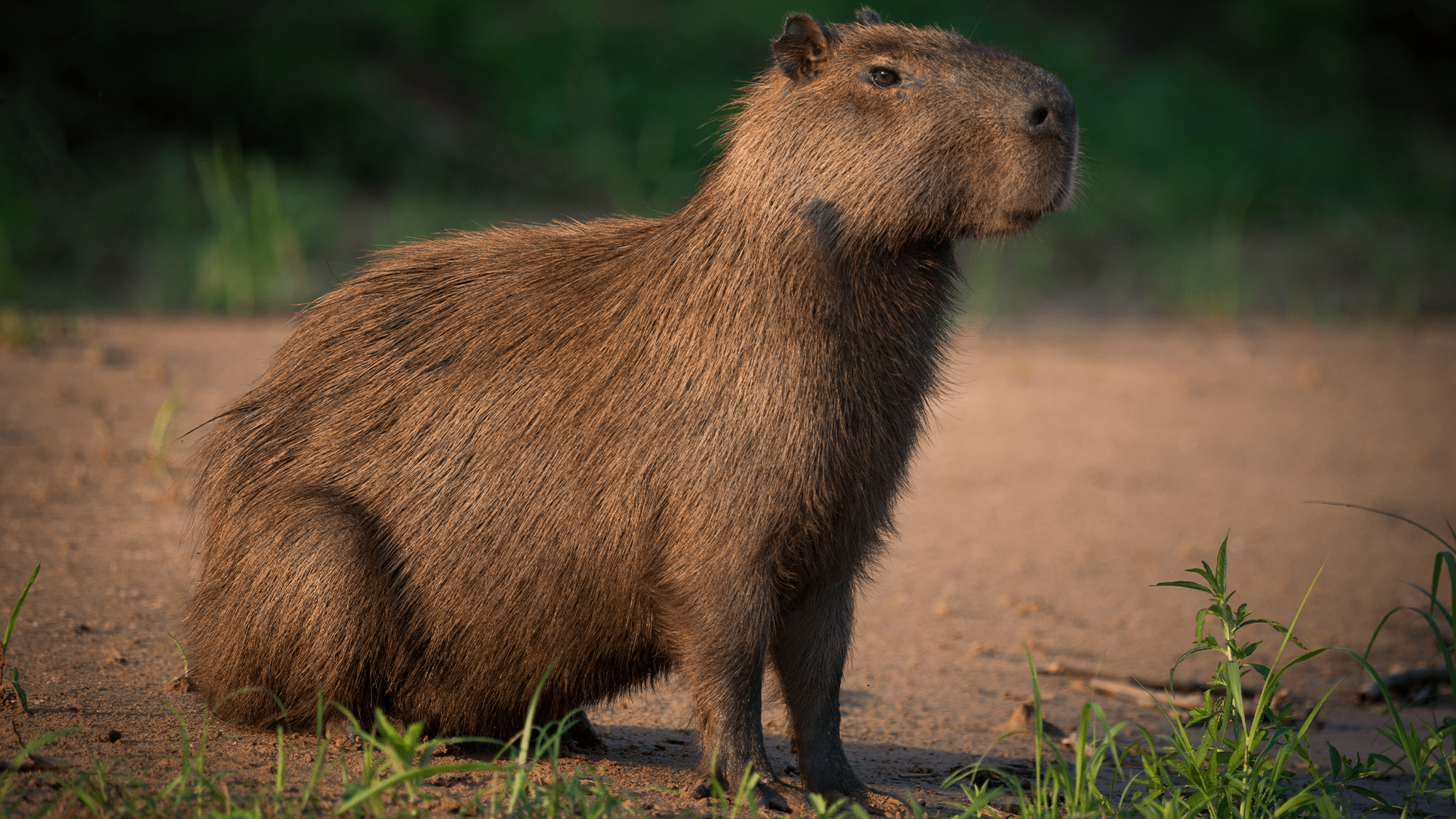

The internet has recently fallen in love with South America’s charismatic rodents called Capybaras. From catchy songs to memes, it’s hard not to see the chunky charmers in your feed these days. Here are some fun facts about these captivating creatures to inform your scrolling.
[Related: Capybara spent a month on the lam after escape from Toronto Zoo.]
Where can I see a capybara in the wild?
Capybaras are the largest rodent in the world can be found east of the Andes Mountains and the riverbanks in Central and South America from Panama to Argentina. Since they are semi-aquatic like beavers and hippos, capybaras typically live beside ponds, swamps, marshes, or wherever standing water is available. They are also called “water hogs” or “capys” and can even stay under water for more than five minutes to escape from predators like anacondas and jaguars.
They have been known to encroach further into human territory as their habitat is dwindling. Since 2020, hundreds of capybaras have taken over Nordelta, a private and gated neighborhood outside of Buenos Aires. The rodents had always been around, but remained hidden. The lockdowns triggered by the COVID-19 pandemic enabled the furry capys to spread and flourish in the posh neighborhood’s parks.
Multiple zoos in the United States, including the Cincinnati Zoo and Botanical Garden (also home to some famous hippos), Southwick’s Zoo in Massachusetts, and the Cape May County Park and Zoo in New Jersey, are home to a handful of adorable specimens as well.

Do capybaras really eat their own poop?
Yes, among other things. They eat their poop for beneficial bacteria that helps their stomach break down the thick fiber from their other food sources such as reeds and grains, according to the San Diego Zoo.
Like other rodents, capybaras have ever-growing front teeth. They use their sharp and long chompers to graze on grass and water plants. When fresh grasses and water plants dry up during the dry season, they eat squashes, melons, reeds, and grains. An adult can eat about six to eight pounds of grasses per day.
How big are capys?
There are two known species of capybara: Hydrochoerus hydrochaeris and Hydrochoerus isthmius. Of the two, H.hydrochaeris is the largest living rodent in the world. It can grow up to 4.3 feet long and weigh a whopping 174 pounds. H. isthmius is a bit smaller. It can grow to about 3 feet long and weigh closer to 62 pounds.
[Related: These prehistoric rodents were social butterflies.]
Can I own a capybara as a pet in the United States?
It depends what state you call home. They are currently legal with restrictions in some states including Texas, Pennsylvania, Nevada, Arizona, and Georgia. California and New York have more stringent rules, including that the animals can only be obtained by those with an approved scientific or educational reason. While ownership may be legal at the state, it may be illegal at the city level.
Yahoo Finance estimates that the initial cost to buy a capy on the exotic animal market is about $1,000 per animal, while other estimates place the cost at $8,000. Vet bills can easily stretch between $600 to $1,000 each year?? and owners need to keep in mind the six to eight pounds of food that they can eat per day. Capybaras are also social animals, so owners need to be prepared to take in more than one for their pet to thrive.
What are capys all over my feed?
Basically, capybaras are kind of the new Baby Shark. The song Capybara from Russian artist Сто-Личный Она-Нас went viral on TikTok earlier this year. Listen at your own risk, as it is a textbook earworm that will be stuck in your head for days.

Popular videos include a capybara sparring with a platypus and jumping into above ground pools. They are also the stars of pop culture memes, including one celebrating the billion dollar hit movie Barbie.

They are also known for being some of the friendliest critters in the animal kingdom. They are very social and live together in herds of 10 to 20 animals. They spend time together cuddling, playing, socializing, and grooming one another. They have even been known to try to use alligators to hitch a ride.
It also doesn’t hurt that they are really cute. In an era of doom scrolling, sometimes it’s just nice to look at their hippo-like eyes and ears as they look above the water.
